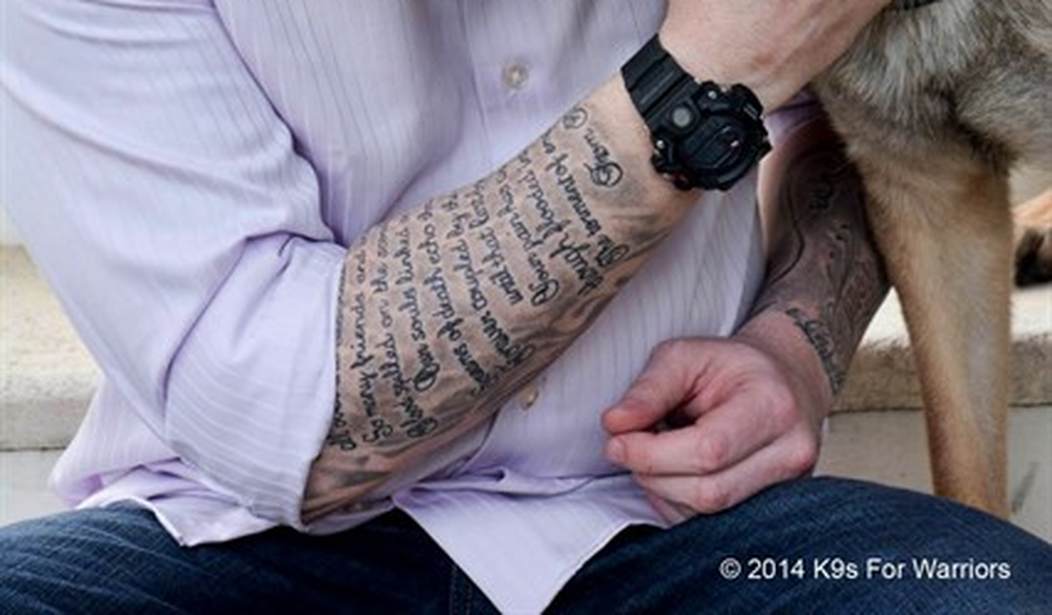There are often forgotten heroes in wars. Some heroes have four legs and fur. Dogs and their handlers in the Vietnam war are getting the recognition they deserve. Stars and Stripes tells the story of Army veteran Ed Reeves and his German shepherd Prince. Ed might have ended up a name on the Vietnam Veterans Memorial if it had not been for Prince.
‘Nothing like that will happen again:’ Dogs might be forgotten heroes of Vietnam, but not by their handlers | Stars and Stripes https://t.co/oL1L2e67Gp
— Seth Robson (@sethrobson1) May 14, 2023
It was Feb. 14, 1971 — Valentine’s Day — Reeves and Prince were a scout team scoping out a trail in Phu Bai, Vietnam, as a group of U.S. soldiers followed behind. A small tree had fallen on the path, but Prince went around it instead of jumping over it. Reeves tried to get the dog to come back but Prince kept circling around the area. Reeves said he could not figure out what the dog was doing so he tried to walk over the tree. Prince came underneath him and put his nose to the ground to indicate something was there.
“I took a step back and he looked at me like, ‘There you go, stupid,’” said Reeves, 72. The dog had discovered a mine was hidden at the spot.
Prince saved his life by keeping him away from a mine.
This wasn’t the only time a soldier’s life was saved, thanks to his dog. During the Vietnam war, there were more than 4,000 dogs trained for scouting, tracking, sentry duty, mine and tunnel detection, and water patrol. It is estimated that the dogs prevented 10,000 service members from dying. Unfortunately, only about 204 dogs were sent to the United States from Vietnam, 2,000 were euthanized.
March 29, 2023, marked the 50th anniversary of when the last U.S. troops left Vietnam and the final group of American prisoners of war (POWs) were freed and left Hanoi. There was a three-day “Welcome Home” commemoration in Washington, D.C. to honor Vietnam veterans and mark the end of the war. Few people there knew about the dogs that served in Vietnam. There was a tent set up by the Vietnam Veterans Dog Handler Association. As attendees passed the tent, many remarked, “I had no idea about dogs in Vietnam” and “Did we really leave dogs there?”
Mostly it appears it was a cost-saving policy to not send home the dogs. But the military also thought the dogs were carrying diseases that would be transported back to the United States. So, the dogs were treated like excess equipment. They were left behind if there was not room on a plane or homes available for the dogs.
Reeves left Vietnam in July 1971. He was not allowed to have contact with Prince but when he was driving off in a jeep, Prince chased him down and stopped to say goodbye.
“It was the happiest day of my life, but also the saddest day leaving him behind,” Reeves said. He arrived back in the U.S. on July 4, 1971. He said he thought about Prince and wondered what happened to him. As it turns out, 36 years later, he learned that Prince was one of the 204 dogs who came home. Prince worked as a drug-sniffing dog for four years for U.S. Customs and Border Protection in San Diego. Then he retired and later died of natural causes in 1983.
Congress passed Robby’s Law in 2000 and Bill Clinton signed it. It requires all military working dogs suitable for adoption to be made available for placement after their service. No more abandoned and euthanized dogs solely for convenience. They deserve better. They have their own memorial. In September 2019, a memorial was unveiled at the Motts Military Museum in Groveport, Ohio. It is called The Vietnam War Dog Team Memorial. It honors 4,225 dogs who served in Vietnam. Deputy Director Lori Motts was upset when she learned about the dogs of the Vietnam war and what happened to them. She worked on creating the memorial. It took three years to raise $113,000 for the memorial and to do the research to make sure tha every dog’s name and serial number were listed on the wall. The same quarry in India was used to get the granite stone for the memorial as that used for the Vietnam Veterans Memorial.
The wall also includes the names of 297 dog handlers, one veterinary, and two veterinary technicians who died in the war.
Reeves is a volunteer at the museum. He worked with Motts throughout the process with finding records and information.
There is a statue in front of the wall and it is based on a photo of Reeves and Prince from 1971. It is as though Reeves and Prince are walking point. As it should be.







Join the conversation as a VIP Member